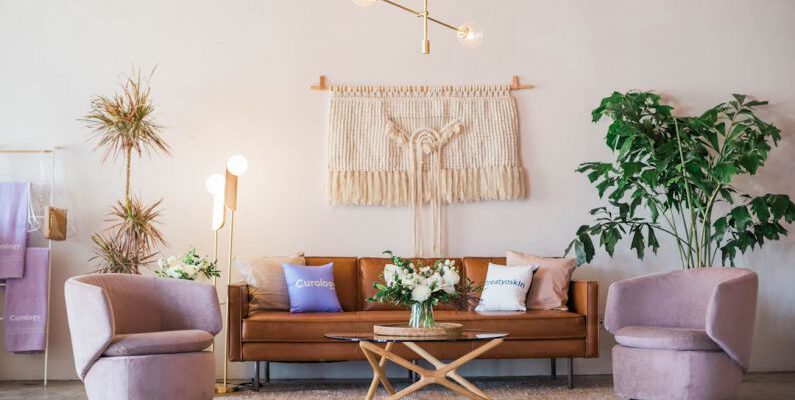Investing in vintage items has become an increasingly popular strategy among collectors and enthusiasts. From classic cars to rare art pieces, certain vintage items have shown significant appreciation in value over time, making them attractive investments for individuals looking to diversify their portfolios. But what exactly sets vintage items apart from other types of investments and why are they considered valuable assets? Let's delve into the reasons behind the allure of vintage items as investments.
Author: 10thchoice
In the realm of beauty products, one crucial element often overlooked is sun protection. Many individuals prioritize skincare routines that focus solely on anti-aging, hydration, or acne treatment, neglecting the importance of shielding the skin from harmful UV rays. However, the reality is that incorporating sun protection into your daily beauty regimen is non-negotiable for maintaining healthy and youthful skin in the long run.
The Harsh Reality of Sun Damage
Sun exposure is one of the primary causes of premature aging and skin damage. The sun emits ultraviolet (UV) radiation, which consists of UVA and UVB rays that penetrate the skin, leading to various detrimental effects. UVA rays can prematurely age the skin, causing wrinkles, fine lines, and age spots, while UVB rays are responsible for sunburns and skin cancer. Over time, cumulative sun exposure without protection can result in irreversible damage, such as collagen breakdown, hyperpigmentation, and an increased risk of skin cancer.The Role of Sun Protection in Beauty Products
Sun protection in beauty products is essential for safeguarding the skin against the harmful effects of UV radiation. Incorporating sunscreen or products with built-in SPF into your skincare routine is a proactive measure to shield your skin from the sun's damaging rays. Sunscreen forms a protective barrier that helps to prevent sunburn, premature aging, and skin cancer, making it a vital component of any beauty regimen.Prevention is Key
It is often said that prevention is better than cure, and this adage holds true when it comes to sun protection. While it may be tempting to focus solely on treating existing skin concerns, such as wrinkles or acne, neglecting sun protection can exacerbate these issues and lead to further damage. By incorporating products with sun protection into your daily routine, you are taking a proactive step towards preserving the health and appearance of your skin in the long term.Choosing the Right Sun Protection
When selecting beauty products with sun protection, it is crucial to choose products that offer broad-spectrum protection against both UVA and UVB rays. Look for products with a minimum SPF of 30, as this provides adequate protection for daily use. Additionally, opt for products that are non-comedogenic and suitable for your skin type to ensure they do not clog pores or cause irritation.Multi-Purpose Benefits
Incorporating sun protection into your beauty routine offers a range of benefits beyond just shielding the skin from UV damage. Many beauty products with SPF also contain additional skincare ingredients, such as antioxidants, moisturizers, and anti-aging compounds, which work synergistically to improve the overall health and appearance of the skin. By choosing multi-purpose products that combine sun protection with other beneficial ingredients, you can streamline your skincare routine while reaping multiple benefits.Maintaining Youthful Skin
One of the primary reasons why sun protection is crucial in beauty products is its role in maintaining youthful skin. UV radiation accelerates the aging process by breaking down collagen and elastin fibers in the skin, leading to sagging, wrinkles, and loss of firmness. By consistently using products with sun protection, you can help preserve the structural integrity of your skin and prevent premature signs of aging, ensuring a more youthful and radiant complexion in the long term.Embrace Sun Protection for Healthy Skin
In conclusion, sun protection is a non-negotiable aspect of any beauty regimen. By incorporating products with SPF into your daily routine, you can shield your skin from the harmful effects of UV radiation, prevent premature aging, and reduce the risk of skin cancer. Remember, healthy skin is beautiful skin, and embracing sun protection is a crucial step towards maintaining a radiant and youthful complexion for years to come. Choose wisely, and let your skin bask in the protection it deserves.
In a world where technology advances rapidly, the constant release of new electronic gadgets can leave many consumers feeling the pressure to keep up with the latest trends. However, purchasing brand-new electronics can often come with a hefty price tag that is not always feasible for everyone. This is where the option of buying second-hand electronics comes into play, offering a range of benefits that go beyond just cost savings.
Affordability and Cost-Effectiveness
One of the most significant advantages of buying second-hand electronics is the cost savings it provides. Second-hand items are typically priced lower than their brand-new counterparts, allowing consumers to access high-quality electronics at a fraction of the cost. This affordability is particularly beneficial for individuals on a budget or those looking to save money without compromising on the quality of the product.Environmental Impact and Sustainability
Another compelling reason to opt for second-hand electronics is the positive impact it has on the environment. By giving pre-owned gadgets a new lease on life, consumers can help reduce electronic waste and contribute to a more sustainable future. The electronics industry is known for generating a large amount of waste, so choosing to buy second-hand devices can play a role in minimizing the environmental footprint associated with the production and disposal of electronics.Variety and Selection
When it comes to second-hand electronics, the market is vast and diverse, offering a wide range of options to choose from. Whether you are looking for a specific model of a smartphone, a laptop, or a gaming console, the second-hand market provides a variety of choices that cater to different preferences and needs. This abundance of selection allows consumers to find unique and rare items that may no longer be available in retail stores, adding a sense of exclusivity to their purchase.Quality and Reliability
Contrary to common misconceptions, second-hand electronics can be just as reliable and functional as brand-new products, especially when purchased from reputable sources. Many second-hand retailers and online platforms thoroughly inspect and test their electronics to ensure that they are in good working condition before offering them for sale. This means that consumers can have confidence in the quality and reliability of their purchase, knowing that they are getting a product that has been vetted for performance.Upgradability and Customization
Buying second-hand electronics also opens up opportunities for customization and upgrades that may not be available with new devices. With a lower initial investment, consumers can afford to invest in upgrades or accessories to enhance the functionality of their electronics, such as adding more storage to a laptop or upgrading the camera of a smartphone. This flexibility allows individuals to tailor their devices to meet their specific needs and preferences without breaking the bank.Long-Term Value and Investment
Investing in second-hand electronics can also offer long-term value, as many pre-owned devices retain their functionality and performance over time. By choosing quality products and taking care of them properly, consumers can enjoy the benefits of their electronics for years to come, making it a worthwhile investment in the long run. Additionally, should the need arise to resell or upgrade their devices in the future, well-maintained second-hand electronics often retain a higher resale value compared to new gadgets. In conclusion, the benefits of buying second-hand electronics extend far beyond cost savings, encompassing environmental impact, variety, quality, upgradability, and long-term value. By considering the advantages of purchasing pre-owned gadgets, consumers can make informed decisions that not only benefit their wallets but also contribute to a more sustainable and personalized approach to technology consumption. So, the next time you are in the market for a new electronic device, consider exploring the second-hand market for a rewarding and fulfilling shopping experience.
In Budget Finds
Are you on the hunt for the best budget finds on the internet? In a world where online shopping has become increasingly popular, finding great deals can be a game-changer for your wallet. Whether you’re in search of affordable fashion, home decor, gadgets, or beauty products, the internet is a treasure trove of hidden gems waiting to be discovered. In this article, we will explore where to find the best budget finds on the internet, helping you score amazing deals without breaking the bank.
**Online Marketplaces**
Online marketplaces are a goldmine for budget finds. Websites like Amazon, eBay, and Etsy offer a wide range of products at competitive prices. You can find everything from clothing and accessories to electronics and home goods on these platforms. Many sellers on these sites offer discounted prices or run promotions regularly, making it easy to snag a bargain. Plus, you can read reviews from other shoppers to ensure the quality of the items before making a purchase.
**Flash Sale Websites**
If you love the thrill of a good bargain, flash sale websites are the perfect place to find budget-friendly deals. Websites like Groupon, Zulily, and Rue La La offer limited-time sales on a variety of products, including clothing, accessories, travel packages, and more. These sales typically last for a short period, so you’ll need to act fast to take advantage of the discounts. Signing up for email alerts from these websites can help you stay informed about upcoming sales and promotions.
**Online Discount Retailers**
Online discount retailers are another great resource for finding budget-friendly deals. Websites like Overstock, TJ Maxx, and Marshalls offer discounted prices on brand-name products across various categories. You can find designer clothing, home decor, furniture, and more at a fraction of the retail price. These retailers often have clearance sections where you can score even bigger discounts on already reduced items. Keep an eye out for seasonal sales and promotions to maximize your savings.
**Coupon and Deal Websites**
Coupon and deal websites are a treasure trove of savings waiting to be discovered. Websites like RetailMeNot, Coupons.com, and Brad’s Deals offer a plethora of coupons, promo codes, and discounts for online retailers. Before making a purchase, be sure to check these websites for any available deals that can help you save money. Many online retailers also offer exclusive discounts to customers who sign up for their email newsletters, so consider subscribing to stay updated on the latest promotions.
**Social Media and Influencer Collaborations**
Social media platforms like Instagram and TikTok have become popular channels for discovering budget finds. Many influencers and content creators collaborate with brands to offer exclusive discounts and promo codes to their followers. By following your favorite influencers and engaging with their content, you can stay informed about any upcoming sales or promotions. Additionally, many brands host giveaways and contests on social media, giving you the opportunity to win free products or discount codes.
**Conclusion**
In conclusion, the internet is a vast landscape of opportunities when it comes to finding the best budget finds. From online marketplaces and flash sale websites to online discount retailers and coupon websites, there are endless options for scoring great deals on a variety of products. By exploring these resources and staying informed about sales and promotions, you can fill your shopping cart with budget-friendly finds without compromising on quality. Happy hunting!
In Online Deals
In today's digital age, online shopping has become increasingly popular due to its convenience and accessibility. One of the many benefits of shopping online is the ability to use coupon codes to save money on your purchases. Coupon codes are a series of letters or numbers that can be entered at the checkout of an online store to receive a discount on your order. With the right strategies, you can maximize your savings and get the most out of online coupon codes. Here's how you can make the most of these money-saving opportunities.
Finding the Best Online Coupon Codes
The first step to maximizing your savings with online coupon codes is to find the best codes available. There are several ways to discover these codes, including visiting coupon websites, signing up for newsletters from your favorite online stores, and following brands on social media platforms. Additionally, many online retailers offer exclusive coupon codes to their loyal customers, so it's worth checking your email or account dashboard for any special deals. Once you have found a few coupon codes that you would like to use, it's essential to compare them to see which one offers the most significant discount. Some codes may provide a percentage off your total purchase, while others offer a fixed dollar amount discount. Choose the code that will give you the most savings based on your specific order.Understanding the Terms and Conditions
Before applying a coupon code to your online purchase, it's crucial to read and understand the terms and conditions associated with the code. Some coupon codes may have restrictions, such as a minimum purchase requirement, an expiration date, or limitations on the products or brands that are eligible for the discount. By familiarizing yourself with these terms, you can ensure that you meet the requirements to receive the discount and avoid any disappointment at checkout.Stacking Coupon Codes for Extra Savings
To maximize your savings even further, consider stacking multiple coupon codes on a single order. Some online retailers allow customers to use more than one coupon code per transaction, providing an opportunity to combine discounts for significant savings. Before attempting to stack coupon codes, make sure to read the retailer's policy to ensure that it is permitted. Additionally, be mindful of any exclusions that may apply when using multiple codes simultaneously.Timing Your Purchases Strategically
Timing is crucial when it comes to utilizing online coupon codes for maximum savings. Keep an eye out for special promotions, sales events, and holiday discounts offered by online retailers. By waiting for the right moment to make your purchase, you can take advantage of additional discounts on top of the savings provided by coupon codes. Planning your shopping around these opportunities can result in substantial savings on your online orders.Making the Most of Loyalty Programs and Rewards
Many online retailers offer loyalty programs and rewards programs that provide additional incentives for customers to shop with them. By joining these programs, you can earn points, discounts, and exclusive offers that can be used in conjunction with coupon codes to maximize your savings. Take advantage of these programs to get the most value out of your online shopping experience and enjoy even more discounts on your purchases. Incorporating these strategies into your online shopping routine can help you make the most of online coupon codes and save money on your purchases. By finding the best codes, understanding the terms and conditions, stacking discounts, timing your purchases strategically, and leveraging loyalty programs, you can maximize your savings and enjoy the benefits of shopping online to the fullest. Start implementing these tips today to make the most of your online shopping experience and stretch your dollars further with every purchase.
In Tech Gadgets
Choosing the Right Laptop for Your Needs
In today's digital age, a laptop has become an essential tool for work, school, and entertainment. With the myriad of options available in the market, selecting the right laptop can be a daunting task. To make an informed decision and ensure that you invest in a device that meets your specific requirements, consider the following factors.Budget Considerations
The first step in choosing the right laptop is determining your budget. Laptops come in a wide range of prices, from budget-friendly options to high-end models with advanced features. By establishing a budget range, you can narrow down your choices and focus on laptops that offer the best value for your money.Performance Needs
When it comes to performance, consider the tasks you will be using the laptop for. If you plan on using it for basic tasks such as web browsing, word processing, and media consumption, a laptop with an entry-level processor and sufficient RAM will suffice. However, if you require a laptop for demanding tasks like video editing, graphic design, or gaming, opt for a model with a powerful processor, dedicated graphics card, and ample storage space.Screen Size and Resolution
The screen size of a laptop plays a significant role in user experience. Laptops are available in various screen sizes, ranging from compact 11-inch models to larger 17-inch displays. Consider your preferences and usage patterns when selecting a screen size. Additionally, pay attention to the resolution of the display, as a higher resolution ensures sharper images and text.Portability and Battery Life
If you plan on using your laptop on the go, portability and battery life are crucial factors to consider. Choose a laptop that is lightweight and compact for easy transportation. Additionally, opt for a model with a long battery life to ensure that you can work or entertain yourself without constantly needing to recharge.Connectivity Options
When selecting a laptop, pay attention to the available connectivity options. Ensure that the laptop has the necessary ports for connecting peripherals such as external hard drives, monitors, and printers. Additionally, consider whether the laptop supports the latest wireless standards for fast and reliable internet connectivity.Operating System
The operating system of a laptop is another important consideration. Popular options include Windows, macOS, and Chrome OS. Each operating system has its strengths and weaknesses, so choose one that aligns with your preferences and familiarity. Consider the software and applications you will be using and ensure compatibility with the chosen operating system.Build Quality and Design
The build quality and design of a laptop can impact its durability and user experience. Look for laptops that are well-built with high-quality materials to ensure longevity. Additionally, consider the design aesthetics and ergonomics of the laptop to ensure that it meets your style preferences and is comfortable to use for extended periods.Customer Reviews and Recommendations
Before making a final decision, take the time to read customer reviews and seek recommendations from friends, family, or online communities. Customer reviews can provide valuable insights into the performance, reliability, and user experience of a particular laptop model. Additionally, recommendations from trusted sources can help you make an informed decision.In Conclusion
Choosing the right laptop for your needs requires careful consideration of various factors, including budget, performance needs, screen size, portability, connectivity options, operating system, build quality, and customer reviews. By taking the time to evaluate these factors and prioritize your requirements, you can select a laptop that will serve you well for years to come. Remember to weigh each factor against your specific needs and preferences to make the best choice possible.
In Online Deals
In the age of e-commerce, online marketplaces have become a popular choice for consumers seeking a convenient and cost-effective way to shop. One of the main draws of online marketplaces is their often lower prices compared to traditional brick-and-mortar stores. This raises the question: why are some online marketplaces cheaper than stores? Let's delve into the factors that contribute to this price discrepancy.
Convenience and Lower Overheads
Online marketplaces offer unparalleled convenience to shoppers. With just a few clicks, consumers can browse through a vast array of products and make purchases without leaving the comfort of their homes. This convenience extends to sellers as well, who can reach a wider audience without the need for a physical storefront. By operating solely online, marketplaces can significantly reduce overhead costs associated with maintaining a physical store. Rent, utilities, and staffing expenses are eliminated, allowing online sellers to pass on these savings to consumers in the form of lower prices. Additionally, online marketplaces benefit from economies of scale, as they can reach a larger customer base compared to a traditional store, further driving down costs per unit.Direct-to-Consumer Model
Another key factor that contributes to the cost-effectiveness of online marketplaces is the direct-to-consumer model many of them employ. By cutting out middlemen and selling directly to customers, online sellers can avoid markups that would typically be added by wholesalers or distributors in a traditional retail setting. This direct-to-consumer approach allows online marketplaces to offer products at competitive prices while maintaining healthy profit margins. Without the need to factor in additional costs associated with intermediaries, online sellers are able to pass on savings to consumers, making their products more affordable and attractive.Dynamic Pricing Strategies
Online marketplaces often utilize dynamic pricing strategies to stay competitive in a fast-paced digital environment. Through the use of algorithms and real-time data analysis, online sellers can adjust prices based on factors such as demand, competitor pricing, and consumer behavior. This dynamic pricing approach allows online marketplaces to offer discounts, promotions, and personalized pricing to customers, ensuring that they are getting the best deal possible. By constantly monitoring market trends and adjusting prices accordingly, online sellers can optimize their pricing strategies to drive sales and attract more customers.Efficient Supply Chain Management
Efficient supply chain management is another key factor that enables online marketplaces to keep costs low. By streamlining the process from sourcing products to fulfillment and delivery, online sellers can minimize inefficiencies and reduce logistical expenses. Through partnerships with third-party logistics providers and fulfillment centers, online marketplaces can ensure quick and cost-effective shipping, enhancing the overall shopping experience for customers. By optimizing their supply chain operations, online sellers can not only reduce costs but also improve inventory management and order fulfillment, leading to higher customer satisfaction.Consumer Behavior and Competition
Consumer behavior also plays a significant role in why some online marketplaces are cheaper than stores. With the rise of price-comparison websites and online reviews, consumers are more empowered than ever to research products and prices before making a purchase. This increased transparency and competition in the online marketplace space have forced sellers to offer competitive pricing to attract and retain customers. As a result, online marketplaces are constantly looking for ways to differentiate themselves through pricing strategies, product offerings, and customer service, ultimately benefiting consumers with lower prices and better deals. In conclusion, the affordability of online marketplaces compared to traditional stores can be attributed to a combination of factors, including lower overhead costs, direct-to-consumer models, dynamic pricing strategies, efficient supply chain management, and consumer behavior. By leveraging these advantages, online sellers can offer competitive prices while providing a seamless and convenient shopping experience for customers.
In Budget Finds
In today's fast-paced world, maintaining a stylish and up-to-date wardrobe can sometimes feel like a luxury reserved for those with a hefty budget. However, with a bit of creativity and strategic planning, it is possible to look chic and fashionable without breaking the bank. By following some simple yet effective tips, you can curate a wardrobe that reflects your personal style while staying within your financial means.
**Thrifting and Second-Hand Shopping**
One of the best ways to maintain a stylish wardrobe on a tight budget is by exploring thrift stores and second-hand shops. These hidden gems often contain unique, high-quality pieces at a fraction of the price you would pay in traditional retail stores. By dedicating some time to browsing through racks and shelves, you can uncover vintage finds, designer items, and trendy pieces that will add flair to your wardrobe without costing a fortune.
**Invest in Versatile Basics**
Building a wardrobe filled with versatile basics is key to creating stylish outfits on a budget. Investing in timeless pieces such as a well-fitted pair of jeans, a classic white shirt, a tailored blazer, and a little black dress can serve as the foundation for a multitude of looks. These staples can be mixed and matched with trendier items to create stylish ensembles for any occasion.
**Mix and Match**
A great way to maximize your wardrobe without overspending is by learning how to mix and match different pieces to create new outfits. Experiment with pairing unexpected items together, such as mixing casual and formal pieces or combining patterns and textures. By thinking outside the box and getting creative with your styling, you can breathe new life into old garments and create fresh looks without having to purchase new clothing.
**DIY and Upcycling**
If you have a knack for crafting and sewing, consider DIY projects and upcycling old clothing to give them a new lease on life. Whether it's adding embellishments, altering the fit, or repurposing garments into something entirely different, these creative endeavors can help you refresh your wardrobe without spending a dime. Upcycling not only allows you to personalize your clothing but also contributes to sustainable fashion practices by reducing waste.
**Sales, Discounts, and Clearance Sections**
Keeping an eye out for sales, discounts, and clearance sections at your favorite stores can help you snag stylish pieces at a fraction of their original price. Many retailers offer end-of-season sales, holiday promotions, and clearance events where you can score great deals on clothing and accessories. By being patient and strategic with your shopping, you can take advantage of these sales to update your wardrobe without exceeding your budget.
**Accessorize Wisely**
Accessories can instantly elevate an outfit and add a touch of style without breaking the bank. Investing in a few key accessories such as statement jewelry, scarves, belts, and handbags can help you transform basic outfits into fashion-forward looks. By choosing versatile accessories that can be mixed and matched with different ensembles, you can create a variety of stylish outfits without having to purchase new clothing regularly.
**Revamp Your Wardrobe Regularly**
To maintain a stylish wardrobe on a tight budget, it's essential to regularly assess your current clothing collection and identify items that you no longer wear or need. By decluttering your wardrobe and selling or donating items that no longer serve you, you can make room for new pieces that align with your personal style. Regularly revamping your wardrobe will not only keep it fresh and current but also prevent you from overspending on unnecessary items.
**In Summary**
Maintaining a stylish wardrobe on a tight budget is all about being resourceful, creative, and strategic with your shopping habits. By exploring thrift stores, investing in versatile basics, mixing and matching pieces, DIY projects, taking advantage of sales, accessorizing wisely, and revamping your wardrobe regularly, you can curate a fashion-forward collection that reflects your personal style without breaking the bank. With a little effort and creativity, looking chic and fashionable is within reach for everyone, regardless of budget constraints.
In Home Decor
Adding a Personal Touch: The Power of DIY Projects in Home Decor
Home decor is a reflection of one's personality and style, showcasing the unique character of the individuals residing within. While there are countless ways to enhance the aesthetic appeal of a living space, do-it-yourself (DIY) projects have gained significant popularity for their ability to infuse a personal touch into home decor. Embracing creativity and individuality, DIY projects offer a fulfilling and budget-friendly approach to transforming living spaces. Let's delve deeper into the impact of DIY projects on home decor and explore how they can elevate the ambiance of your abode.Unleashing Creativity: Customizing Your Space
One of the most compelling aspects of DIY projects in home decor is the opportunity they provide for individuals to unleash their creativity and showcase their unique style. Whether it's creating handmade artwork, upcycling furniture, or crafting decorative accents, DIY projects allow homeowners to tailor their living environment to their preferences. By incorporating personalized elements into their decor, individuals can create a space that truly speaks to their identity and interests, making it a reflection of who they are.Enhancing Individuality: Standing Out from the Crowd
In a world where mass-produced decor items dominate the market, DIY projects offer a refreshing alternative for those looking to stand out from the crowd. By crafting one-of-a-kind pieces that cannot be found in mainstream stores, individuals can infuse their homes with a sense of individuality and uniqueness. Whether it's a hand-painted mural, a custom-built shelving unit, or a repurposed vintage find, DIY projects enable homeowners to make a bold statement and set their living space apart from cookie-cutter designs.Creating Meaningful Connections: The Joy of Handmade
There is a profound sense of satisfaction that comes from creating something with your own hands, and this sentiment is amplified when it comes to home decor. DIY projects allow individuals to imbue their living spaces with a sense of authenticity and craftsmanship that is often lacking in mass-produced items. Whether it's a quilt passed down through generations, a macrame wall hanging made with care, or a handmade piece of furniture, the personal touch of DIY projects can foster a deeper connection to the home and create a warm and inviting atmosphere for both residents and guests.Expressing Emotions: Infusing Sentiment into Decor
Home decor is not just about aesthetics; it is also a means of expressing emotions and memories. DIY projects offer a unique opportunity to infuse sentimental value into the decor by incorporating personal stories, experiences, and cherished items into the design scheme. Whether it's framing family photos, displaying travel mementos, or creating a gallery wall of children's artwork, DIY projects allow homeowners to surround themselves with reminders of what matters most, creating a space that is not just visually appealing but emotionally resonant.Adapting to Change: Flexibility in Design
One of the key advantages of DIY projects in home decor is the flexibility they offer in adapting to changing tastes, trends, and lifestyles. Unlike store-bought decor items that may quickly become outdated or fall out of favor, DIY projects can be easily modified, updated, or replaced to reflect evolving preferences. Whether it's repainting a piece of furniture, switching out throw pillows, or rearranging wall art, DIY projects empower homeowners to refresh their living space without breaking the bank, ensuring that their decor remains current and reflective of their style.Crafting Memories: The Legacy of DIY Projects
In addition to enhancing the aesthetic appeal of a home, DIY projects have a lasting impact that extends beyond mere decoration. The memories created through the process of crafting and implementing DIY projects become ingrained in the fabric of the home, forming a legacy that can be passed down through generations. Whether it's a handmade quilt that becomes a family heirloom, a DIY renovation project that bonds loved ones together, or a collection of handcrafted items that tell the story of a life well-lived, DIY projects leave a lasting imprint on the home and its inhabitants.Embracing Personalization: Making It Your Own
At the heart of DIY projects in home decor is the concept of personalization – the ability to transform a living space into a reflection of one's unique personality, interests, and experiences. By embracing DIY projects, homeowners can take ownership of their decor and create a home that is truly their own. Whether it's through small, subtle touches or bold, statement pieces, DIY projects offer a canvas for self-expression and creativity, allowing individuals to curate a living environment that resonates with who they are and what they love. In conclusion, DIY projects have the power to add a personal touch to home decor that goes beyond mere aesthetics. By unleashing creativity, enhancing individuality, creating meaningful connections, expressing emotions, adapting to change, crafting memories, and embracing personalization, DIY projects enable homeowners to transform their living spaces into unique, personalized sanctuaries that reflect their identity and values. Whether you're a seasoned crafter or a novice DIY enthusiast, incorporating handmade elements into your decor can elevate the ambiance of your home and imbue it with warmth, character, and soul. So, roll up your sleeves, grab your tools, and let your creativity run wild – the possibilities are endless when it comes to adding a personal touch to your home decor through the power of DIY projects.
In today's fast-paced world, technology continues to evolve, offering consumers a wide range of gadgets and devices to choose from. Luxury tech gadgets, in particular, have gained popularity among those who seek not only functionality but also style and exclusivity in their devices. With premium price tags attached to these high-end products, one might wonder: are luxury tech gadgets a good investment? Let's delve into what sets these items apart and why they may be worth considering.
The Appeal of Luxury Tech Gadgets
Luxury tech gadgets stand out for their exquisite design, superior craftsmanship, and cutting-edge technology. From smartphones and smartwatches to headphones and laptops, these products are often created with premium materials such as high-quality metals, fine leather, and sapphire crystal displays. The attention to detail in the design and construction of luxury tech gadgets not only enhances their aesthetic appeal but also reflects the dedication to delivering a superior user experience. Moreover, luxury tech brands often collaborate with renowned designers and artists to create limited-edition pieces that showcase innovation and creativity. These exclusive collaborations result in unique products that are highly sought after by collectors and tech enthusiasts alike. By owning a luxury tech gadget, individuals can express their personal style and appreciation for fine craftsmanship while enjoying the latest technological advancements.The Status Symbol Factor
Beyond their functionality, luxury tech gadgets serve as status symbols that convey a sense of prestige and sophistication. Owning a luxury smartphone or wearable device can signify one's taste for luxury and willingness to invest in quality products. These items are often associated with luxury lifestyle brands that have a strong reputation for excellence and exclusivity, further elevating their appeal among consumers who value luxury and refinement. For some individuals, owning a luxury tech gadget is not just about having the latest features and technology but also about making a statement and standing out from the crowd. These products are designed to cater to discerning customers who appreciate the finer things in life and are willing to pay a premium for a unique and luxurious experience. As such, luxury tech gadgets have become more than just functional devices—they are symbols of luxury and sophistication that reflect one's taste and style.The Investment Potential
While luxury tech gadgets come with a higher price tag compared to mass-market products, they also hold the potential for long-term value appreciation. Limited-edition releases, special collaborations, and rare collectible pieces can appreciate in value over time, turning these gadgets into valuable assets for collectors and investors. As the demand for exclusive and premium tech products continues to grow, owning a luxury gadget can become a wise investment that offers both enjoyment and potential financial returns. Additionally, luxury tech brands often provide exceptional customer service and after-sales support, ensuring that their products are well-maintained and cared for. This level of service adds to the overall value proposition of luxury tech gadgets, making them a worthwhile investment for those who value quality, durability, and exclusivity in their technology purchases.In Conclusion: The Timeless Allure of Luxury Tech Gadgets
In conclusion, luxury tech gadgets offer a unique blend of style, innovation, and exclusivity that sets them apart from mainstream products. Whether as a status symbol, a statement of personal style, or a potential investment, luxury tech gadgets appeal to a discerning audience that values quality and craftsmanship. By combining cutting-edge technology with premium materials and design, these products embody the timeless allure of luxury and sophistication in the digital age. Investing in a luxury tech gadget is not just about owning a high-end device—it's about owning a piece of art and innovation that reflects one's appreciation for the finer things in life.Understanding the Key Factors that Make Appliances Energy-efficient
In today's world, where environmental concerns are increasingly at the forefront of our minds, the push for energy efficiency has become more important than ever. From light bulbs to refrigerators, consumers are constantly seeking out appliances that not only perform well but also consume less energy. But what exactly makes an appliance energy-efficient? Let's delve into the key factors that contribute to the energy efficiency of our everyday devices.Energy Star Certification: The Gold Standard
When it comes to identifying energy-efficient appliances, one of the first things to look for is the Energy Star certification. This symbol, a joint program of the U.S. Environmental Protection Agency and the Department of Energy, signifies that the product meets certain standards for energy efficiency set by these government agencies. Appliances with the Energy Star label are designed to consume less energy while still delivering the same level of performance as their counterparts.Insulation and Sealing: Keeping Energy In
A crucial aspect of energy efficiency in appliances is how well they are insulated and sealed. For instance, refrigerators and freezers with proper insulation can maintain a cold temperature more efficiently, reducing the need for the compressor to work harder and consume more energy. Similarly, in washing machines and dishwashers, proper insulation not only helps in maintaining water temperatures but also reduces heat loss, thus saving energy.Energy-efficient Motors and Compressors
The motors and compressors used in appliances play a significant role in determining their energy efficiency. In refrigerators, for example, models with inverter compressors are more energy-efficient as they can adjust the compressor speed based on cooling demand, unlike traditional compressors that operate at a fixed speed. Likewise, appliances with energy-efficient motors, such as washing machines and dishwashers, require less energy to operate while still delivering optimal performance.Smart Features and Automation
With advancements in technology, many modern appliances now come with smart features and automation that contribute to their energy efficiency. For instance, smart thermostats in refrigerators can adjust the temperature settings based on usage patterns, helping to conserve energy. Similarly, washing machines with load sensors can optimize water usage depending on the size of the load, reducing water and energy consumption.Energy-efficient Lighting and Displays
When it comes to household appliances, lighting and displays may seem like minor components, but they also play a role in overall energy efficiency. Appliances with LED lighting consume less energy compared to traditional incandescent bulbs, while displays with energy-saving modes help reduce power consumption when not in use. These small yet impactful features contribute to the overall energy efficiency of the appliance.Material and Design Considerations
The materials used in the construction of appliances can also impact their energy efficiency. For instance, appliances made with energy-efficient materials, such as stainless steel or aluminum, are not only durable but also aid in better heat conduction and retention, reducing energy consumption. Additionally, the design of appliances, such as streamlined airflow in refrigerators or efficient water circulation in dishwashers, can also enhance their energy efficiency.Maintenance and Regular Servicing
Another crucial aspect of ensuring the energy efficiency of appliances is regular maintenance and servicing. Over time, dust buildup, worn-out seals, or faulty components can lead to decreased efficiency and increased energy consumption. By following the manufacturer's maintenance guidelines and scheduling regular servicing, you can ensure that your appliances continue to operate at their optimal energy-efficient levels.In Conclusion: Making Informed Choices for a Greener Future
As consumers, we hold the power to make informed choices that not only benefit us but also contribute to a greener future. By understanding the key factors that make appliances energy-efficient, we can prioritize energy efficiency when purchasing new appliances and strive to reduce our overall energy consumption. From Energy Star certification to smart features and materials, every aspect plays a role in creating a more sustainable and energy-efficient home environment. Let's embrace these factors and make a conscious effort to adopt energy-efficient appliances for a brighter, greener tomorrow.
In Home Decor
Creating a relaxing home environment is essential for promoting a sense of calm and well-being. One effective way to achieve this is through the strategic use of color. The colors we surround ourselves with can have a significant impact on our mood and overall sense of comfort within our living spaces. By carefully selecting the right colors for your home, you can create a soothing and tranquil atmosphere that promotes relaxation and rejuvenation. In this article, we will explore the best colors for creating a relaxing home environment.
**Soft Blues and Greens**
Soft blues and greens are often associated with feelings of serenity and tranquility. These cool tones can help to create a calming atmosphere in your home, perfect for unwinding after a long day. Blue is known to be a soothing color that can lower blood pressure and heart rate, making it an ideal choice for bedrooms and living areas. Green, on the other hand, is often linked to nature and growth, and can evoke a sense of peace and harmony within a space. Consider using soft shades of blue and green in your home to promote relaxation and create a peaceful environment.
**Neutrals**
Neutral colors such as white, beige, and grey are timeless choices for creating a relaxing home environment. These versatile hues provide a blank canvas for you to work with, allowing you to add pops of color through accessories and furnishings as desired. Neutral colors can help to create a sense of balance and simplicity in your home, which can be especially beneficial for promoting relaxation. Consider using neutral tones on walls, floors, and larger pieces of furniture to create a cohesive and calming space.
**Soft Pastels**
Soft pastel colors such as lavender, blush pink, and soft yellow can add a touch of warmth and tranquility to your home. These gentle hues can create a sense of comfort and relaxation, making them perfect for bedrooms and cozy living spaces. Lavender is often associated with relaxation and stress relief, while blush pink can evoke feelings of softness and femininity. Soft yellow is known to be an uplifting color that can promote happiness and positivity. Incorporating soft pastel colors into your home can help to create a soothing and inviting atmosphere.
**Earthy Tones**
Earthy tones such as terracotta, rust, and ochre can bring a sense of warmth and grounding to your home. These rich colors are reminiscent of nature and can create a cozy and welcoming atmosphere. Terracotta, in particular, is a trending color that can add depth and character to a space, making it an excellent choice for creating a relaxing environment. Rust and ochre tones can evoke feelings of comfort and stability, perfect for creating a sense of sanctuary within your home. Consider incorporating earthy tones into your decor to create a warm and inviting space that promotes relaxation.
**Cool Grays and Soft Whites**
Cool grays and soft whites are classic choices for creating a serene and peaceful home environment. These light and airy colors can help to open up a space and create a sense of freshness and clarity. Cool grays can add a touch of sophistication and modernity to a room, while soft whites can create a clean and calming atmosphere. Consider using cool grays and soft whites in combination with other calming colors to create a cohesive and relaxing environment in your home.
**Conclusion:**
In conclusion, the colors you choose for your home can have a powerful impact on your overall sense of well-being and relaxation. By incorporating soft blues and greens, neutrals, soft pastels, earthy tones, and cool grays and soft whites into your decor, you can create a tranquil and inviting space that promotes relaxation and rejuvenation. Experiment with different color combinations to find the perfect palette for your home, and enjoy the calming effects of a well-designed living environment.











